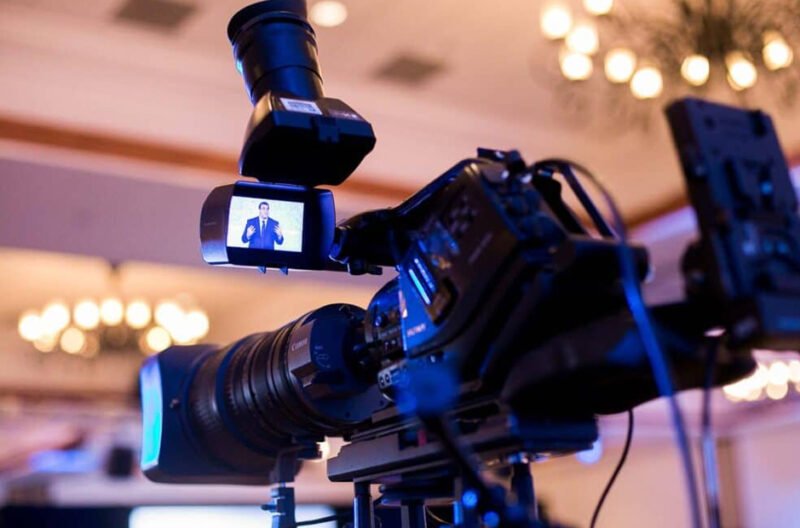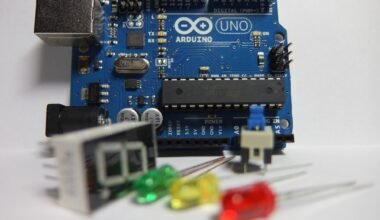If you’ve ever been to a conference, corporate event, or live show, you’ve seen AV technology in action, but what is av exactly? It stands for audio-visual—the combination of sound and visuals working together to create a smooth, engaging experience. Think microphones, speakers, LED walls, and projectors. AV makes sure the message is clear, the visuals are sharp, and the audience stays connected from start to finish.
From projectors to microphones, screen displays, and sound systems, AV technology plays a vital role in delivering a seamless experience. Let’s dive deeper into the world of AV and understand why it’s crucial for your next event.
The Core Components of AV Technology
AV is more than just speakers and screens. It’s a combination of hardware and software that work together to create a cohesive experience. The most common components of AV include:
1. Audio Systems
Audio systems are at the heart of any AV setup. These include microphones, speakers, and mixers. Their purpose is simple: ensure that sound reaches every corner of the room, with clarity.
- Microphones: These capture and amplify sound. From handheld mics to lapel mics and headset mics, they allow speakers to be heard clearly, no matter the environment.
- Speakers: These deliver sound to the audience. Depending on the size and layout of the venue, different speaker configurations are used.
- Mixers: Mixers are used to control the sound. They adjust volume levels, EQ, and balance between microphones, music, and other audio components.
A well-designed audio system is essential for making sure attendees can hear every word clearly. Whether it’s for a corporate presentation or a seminar, sound quality can either elevate or detract from the experience.
2. Visual Equipment
The visual aspect of AV technology deals with everything you can see. It involves screens, projectors, LED walls, and displays that show images, videos, or presentations.
- Projectors and Screens: These are commonly used for large events. They display content like presentations, videos, and images on a larger scale.
- LED Walls: Used for high-impact visuals, LED walls are becoming increasingly popular for large-scale events or performances. These walls offer bright, crisp images and are often used for branding, product demos, or live feeds.
- Monitors: Smaller displays, like flat-panel monitors or TV screens, are used for breakout sessions or to display information at a more personal level.
The visual components ensure that your content is seen clearly by everyone in the room. High-quality visuals create a professional atmosphere and engage your audience.
3. Lighting Systems
While lighting is technically separate from audio and visual, it is often integrated into AV setups to enhance the overall event experience. Lighting creates ambiance, highlights key moments, and draws attention to specific areas or stages.
- Stage Lighting: This can be used to highlight the speaker or performer, ensuring they’re the focal point.
- Ambient Lighting: Sets the mood of the venue, from bright and energetic to soft and relaxing.
- Special Effects: Lighting effects like spotlights, moving lights, or laser shows can add drama and excitement to an event.
Lighting, when done right, makes your event feel polished and professional. It can highlight moments, emphasize themes, and even change the mood of the audience.
4. Control Systems
Control systems are the brains of any AV setup. They allow for the centralized management of all AV components—audio, video, and lighting. These systems ensure that the event runs smoothly by controlling the sound levels, visual cues, and even lighting transitions in real-time.
- Touch Screens: Many AV setups use touch-screen controls to manage sound and visual systems. This makes it easy to change settings quickly without disruption.
- Remote Controls: For events with multiple rooms or venues, remote controls allow AV teams to manage systems from a distance, ensuring everything runs on time.
A seamless control system makes the job of managing an event much easier, ensuring all AV components work together harmoniously.
Why AV Technology is Critical for Events
AV technology is the backbone of any modern event. Here’s why it’s so essential:
1. Engagement and Communication
Whether you’re presenting to a small group or a large audience, AV ensures that your message is clear and engaging. With the right audio system, everyone can hear the speaker, no matter where they sit. And with visual aids, attendees can better understand the information being presented.
Without AV, presentations might be less engaging or harder to follow. Imagine trying to give a speech without a microphone or showing a video presentation on a small, blurry screen. It would be hard to capture attention and convey the right message.
2. Consistency and Professionalism
Using AV technology adds a level of professionalism to your event. A crisp sound system, clear visuals, and effective lighting all contribute to a polished presentation. This is crucial for corporate events, where you want to make a lasting impression.
AV also helps create a consistent experience across various sessions. Whether it’s a multi-day conference or an exhibition, your AV setup can provide uniformity in sound and visuals throughout different areas of the event.
3. Creativity and Flexibility
With the right AV equipment, you can add creative touches to your event that would otherwise be impossible. AV allows for dynamic presentations, including the integration of video clips, live feeds, or interactive displays.
For example, event producers can use special effects lighting to set the mood or create dramatic moments. Custom visuals can be displayed for branding or to emphasize specific points in your presentation. AV makes the event more immersive, engaging, and memorable.
4. Technical Support for Troubleshooting
AV setups often come with technical support. If something goes wrong, it’s important to have experts on hand to solve the problem. They can quickly troubleshoot any issues with the sound system, visuals, or lighting, ensuring minimal disruption to the event.
A good AV team doesn’t just set up equipment—they’re there to ensure everything runs smoothly during the event. If an issue arises, they can fix it without causing delays or confusion.
Common AV Issues and How to Avoid Them
Even with the best planning, technical difficulties can occur. Here are some common AV issues and tips on how to avoid them:
1. Poor Sound Quality
Issue: Echoing, muffled audio, or feedback can make the event unpleasant.
Solution: Ensure your audio system is calibrated properly before the event. Test microphones and speakers to avoid problems during the event. Always have backup microphones and sound technicians available.
2. Visual Distortion
Issue: Blurry or dim visuals can make presentations hard to follow.
Solution: Double-check the resolution and brightness of projectors and screens. Test all visuals in advance to ensure clarity. Also, ensure that screens are large enough for all attendees to see.
3. Lighting Problems
Issue: Poor lighting can make speakers hard to see or lead to a flat, unengaging atmosphere.
Solution: Work with an experienced lighting team to ensure proper placement and brightness. Use lighting to highlight the speakers and create an atmosphere that matches the event’s theme.
Conclusion: Making AV Work for You
So, what is AV? It’s more than just technology. AV is the foundation of any successful event. It enhances engagement, ensures clarity, and adds creativity to the overall experience. From audio systems to visual displays, every element of AV technology plays a critical role in ensuring your event runs smoothly.
By working with a skilled AV team and understanding the components involved, you can make sure your next event goes off without a hitch. Don’t underestimate the power of AV technology. It’s what turns a basic event into something memorable and engaging.





